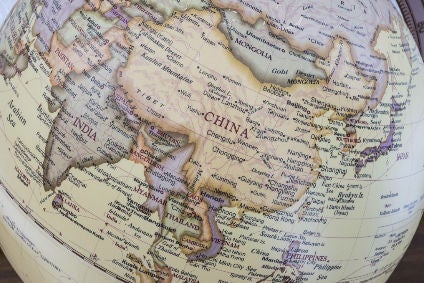
As the world’s largest textile and apparel producer and exporter, China holds the key to unlocking a truly circular textile and apparel industry, according to a new report that sets out five goals to build a new textiles economy for the superpower.
The ‘Make Fashion Circular: Outlook for a New Textiles Economy in China‘ report from the China National Textile and Apparel Council (CNTAC), the Ellen MacArthur Foundation and the Lenzing Group, gives an overview of China’s current textiles and apparel industry from the perspective of its entire supply chain.
It notes China’s total fibre processing volume accounted for 50% of the world’s total, and its textile and apparel export volume accounted for 35% of the global total in 2018. The country is also one of the largest textiles and apparel consumer markets in the world, and one of the top three markets for many well-known fashion brands and companies.
But it is also one of the biggest contributors to the waste and pollution currently attributed to the industry, meaning China plays an important role in the transition to circular textiles and apparel – crucial to the future of global circular fashion.
“The expanding new middle-class and improving consumer awareness will further unleash the potential of China’s textile and apparel market and drive green consumption,” says the report.
80% of the world’s production of high count yarn comes from China, more than 90% of the world’s colour-spun yarn production comes from China, 60% of the world’s high-grade yarn-dyed shirt fabric production comes from China, 30% of the world’s high-grade denim production comes from China, and the production technology of high count and high density fabric is mainly in China.

US Tariffs are shifting - will you react or anticipate?
Don’t let policy changes catch you off guard. Stay proactive with real-time data and expert analysis.
By GlobalData“China’s textile industry still maintains an obvious international competitive advantage in a complex and volatile international trade environment,” the research notes.
China has had a circular economy vision at a national level since 2005, but due to the large range of product categories, a long industrial processing chain, and large volumes, there is still a lot of room for improvement in the textile and apparel industry in terms of the substitution of non-renewable raw materials, the resource utilisation level in production, the recycling and reuse of textile waste, and design and consumption based on circular economy principles.
“China’s textile industry plays an important role in the global textile industry through its whole value chain, which means it can contribute a lot to global sustainable development by improving the industrial chain and promoting circular economy practices,” says Jian Hu, SVP of Lenzing Group North Asia.
“Starting from a global perspective, the report sheds light on the circular economy transition of China’s fashion industry, looks deep into its current status, challenges, and opportunities for circular fashion on the basis of numerous pieces of research as well as case studies and data analysis. It can also provide support and guidance to stakeholders systematically, so as to accelerate the industrial transformation.”
A vision for a new textiles economy for China is put forward in the report, with the aim of building a green, circular and low-carbon textile and apparel industry to improve resource efficiency and reduce resource consumption and the negative impact on the environment. Its five goals address raw materials, design, production, consumption and after use:
- Further optimise the raw material structure to reduce the consumption of non-renewable resources.
- Turn to textile design based on the principle of a circular economy.
- Further improve resource efficiency in production.
- Innovate business models and expand green consumption.
- Upgrade the quality and efficiency of textile waste recycling.
“It is obvious that a new textiles economy is not only a solution to resource and environmental risks but also a great growth opportunity. In recent years, various uncertain factors have increased the difficulties and risks of economic recovery, exacerbated by the outbreak of the Covid-19 pandemic in early 2020.
“The textile and apparel industry, which is highly globalised, is facing serious challenges, putting different stakeholders under pressure. Transitioning to a circular economy is crucial to high-quality growth of China’s textile and apparel industry. In the new era of increasing complexity, various stakeholders in China’s textile and apparel industry, including government, enterprises, designers, associations and research institutions as well as consumers, unified by the common vision of circular development and embracing the global value chain, should work together to strengthen and deepen cooperation, grasp new growth opportunities to build a more resilient industrial value chain. As China embarks on a path to circular economy transition in line with its national conditions, it will also contribute to global circular fashion with its own solutions.”
Click here to access the full report.




